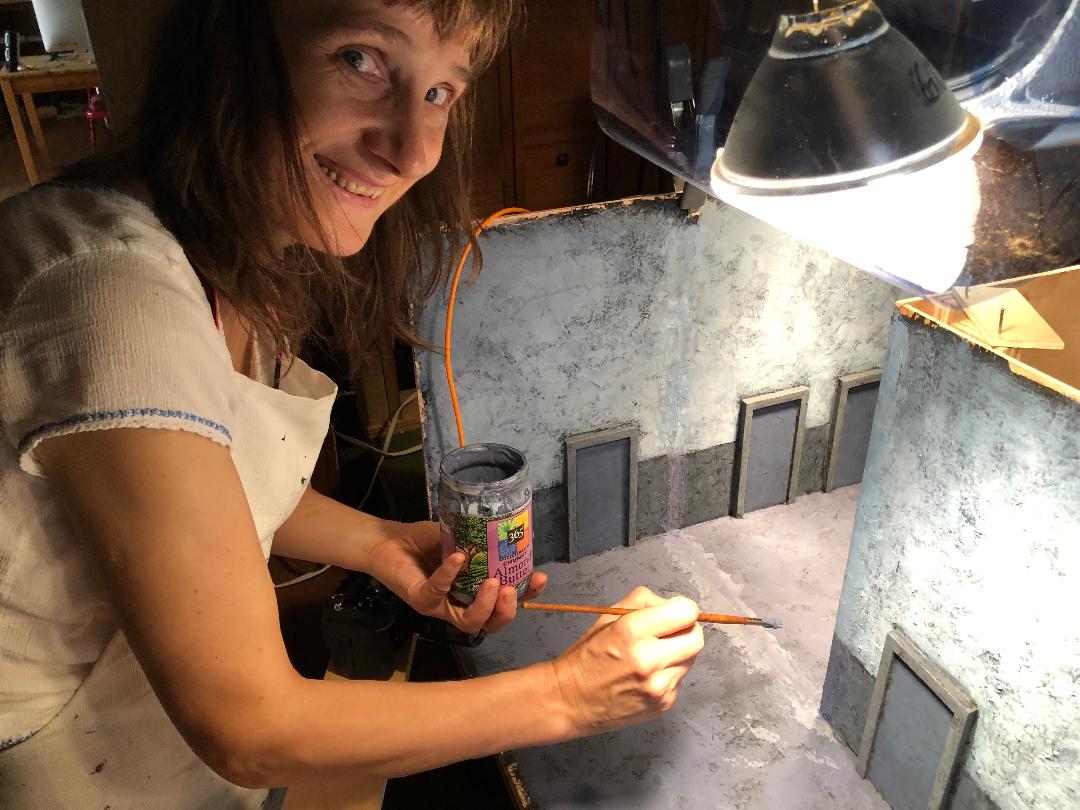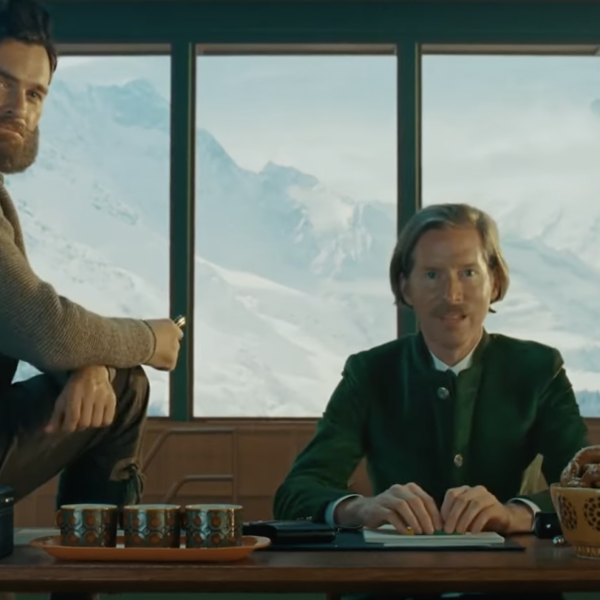“I want to take the mask off of romantic love, a most over-hyped human emotion,” Latvian animation filmmaker Signe Baumane told IndieWire about the fundamental intent of her second, uniquely crafted feature, “My Love Affair with Marriage,” now touring U.S. cinemas.
Baumane first thought of the concept for this sophomore effort while on production for her award-winning 2014 debut “Rocks in My Pockets,” which used surrealist vignettes to amusingly detail the mental health struggles of the women in her family.
To stay relevant to her online followers while involved in the intense process of making “Rocks,” Baumane started sharing intimate stories about her second marriage on her personal blog. The overwhelmingly positive reception — those entries were her most-read ever — convinced her to eventually adapt them into the visual realm of animation.
“I wanted to get to the bottom of why we fall in love. Why both of us took this huge leap of faith and plunged into a marriage just knowing each other for three weeks,” she explained about what ultimately became the musical “My Love Affair with Marriage.” Through lively and thematically pointed songs, the feminist narrative grapples with how Zelma (voiced by “Succession” star Dagmara Dominczyk), a Latvian woman, attempts to mold herself to fit within strict societal gender norms, only to discover the cracks in what they promise.
Fiercely independent endeavors, both of Baumane’s full-length animated works were painstakingly produced between her studio located in Brooklyn’s Sunset Park and Studio Locomotive in Baumane’s native Latvia. Only five artists, including Baumane herself, comprised the core NYC-based team on “Marriage,” which took seven years to complete.
What formally distinguishes Baumane’s current work is her use of physical sets, like those built for stop-motion projects, for her hand-drawn characters to inhabit. Her interest in mixing these mediums emerged when in 2010 an Italian fashion designer commissioned her to paint a mural and later to create several human-size papier-mâché sculptures.
Fascinated with this newfound medium — she had never done sculpting before — Baumane decided to incorporate it in “Rocks in My Pockets” and now into “Marriage.” “When you have three-dimensional objects, you can use cinematic tools like pans and zooms,” she said.
First, the three-dimensional backgrounds are made out of wood, then plastered with papier-mâché, and later layered with five coats of paint to reveal texture. Once lit as if they were sets on a live-action production, Baumane photographs them in stop motion, frame by frame, and draws the characters as they would move in those spaces using printouts from these photographs. Backgrounds must be shot in still photos because when she first tried to simply film them in live action and add the hand-drawn characters, the results were jarring.
“Disney movies did two frames per drawing. But I thought, ‘Maybe I need to animate on ones: one drawing per frame. I did that, and it didn’t change anything,” she said. “The realistic smoothness of the camera movement accented the artificiality of animation.”
Baumane still draws using tangible tools instead of doing so digitally. “Pencil on paper excites my brain,” she says. “As an artist, you should always use materials that excite you.”
Each of her countless drawings is shaded, then scanned into Photoshop and sent to the team of artists in Latvia in charge of coloring and compositing. “It’s not a mindless painting job, the artists who color these characters have to understand the dimension of the human shape,” she says. “With their shading, they have to give three-dimensionality to the characters so that they don’t look flat against the three-dimensional backgrounds.”
While Baumane animated about 90 minutes of the film herself, the segments that describe the biological reasoning for attraction and love, 14 minutes in total, were brought to life by Yajun Shi, a graduate of Pratt Institute, whose short film “Parasite” impressed Baumane.
“Marriage” is a labor of love not only based on the limited recourses at the artist’s disposal, but because Baumane’s closest collaborator is her partner of over 20 years, Sturgis Warner, who serves as producer, lead carpenter for the sets, and also helped secure Stephen Lang, of “Avatar” fame, to voice one of the characters. The personal and creative bond between Warner and Baumane is inextricable from the art they conceive together.
“My film is for all the people who had ever felt different, like they couldn’t fit in, but still want to be loved because our desire for being loved is universal,” she said.
Baumane moved to New York City in 1995. Back home, she had become a published poet as a teenager (a skill that helped her step in as a lyricist on “Marriage”) and later studied philosophy in Moscow when Latvia still formed part of the Soviet Union. Animation came into her life as an escape from the post-graduation prospect of becoming a teacher.
“I am a rebel against authority,” Baumane said. “I didn’t want to impose my authority on anyone or be part of this brainwashing machine of the Soviet Union, but I had to have a job.”
A friend who saw her doodles suggested she should go into animation. Soon, as she started to organize her sketches into storyboards, Baumane discovered this was the first she had ever felt truly passionate about something. Although she knows that living in Europe she could access funds for independent artists, rather than struggling to stay afloat in New York, Baumane thinks migrating to the U.S. allowed her to express herself freely in her work.
“If I had stayed in Latvia, I would never make films like these,” she said. “Because Latvia is a small country, and everybody knows each other. If I had started talking about my family’s dark secrets there, the fear of judgment would have stopped me.”
Making ”Rocks in My Pockets” in New York over a decade ago, Baumane felt safe from any interference. Since she didn’t think anyone back home would ever watch the finished title, there was no self-censorship. That changed when “Rocks” found success internationally and was chosen to represent Latvia for the Best Foreign Language Film at the Oscars.
“Of course, my family saw the film because it went to over 160 film festivals, and it was released in Latvia,” she said. “They were horrified and rightly so. Still, as an immigrant, I feel that you can see your own country probably better from a distance.”
Baumane is now preparing the final feature in what she considers a trilogy of personal films tied to Latvia. Titled “Karmic Knot,” the third chapter will explore the situations that hold a group of people together for better or worse and often against their own wishes.
“This will be a film about my family living through Russia’s occupation of Latvia and how then when the Soviet Union was collapsing in stages, my family would make adjustments to how we lived,” Baumane said. “In the end, they made these adjustments so impossible to endure that one of the family members had to leave and go to New York.”




